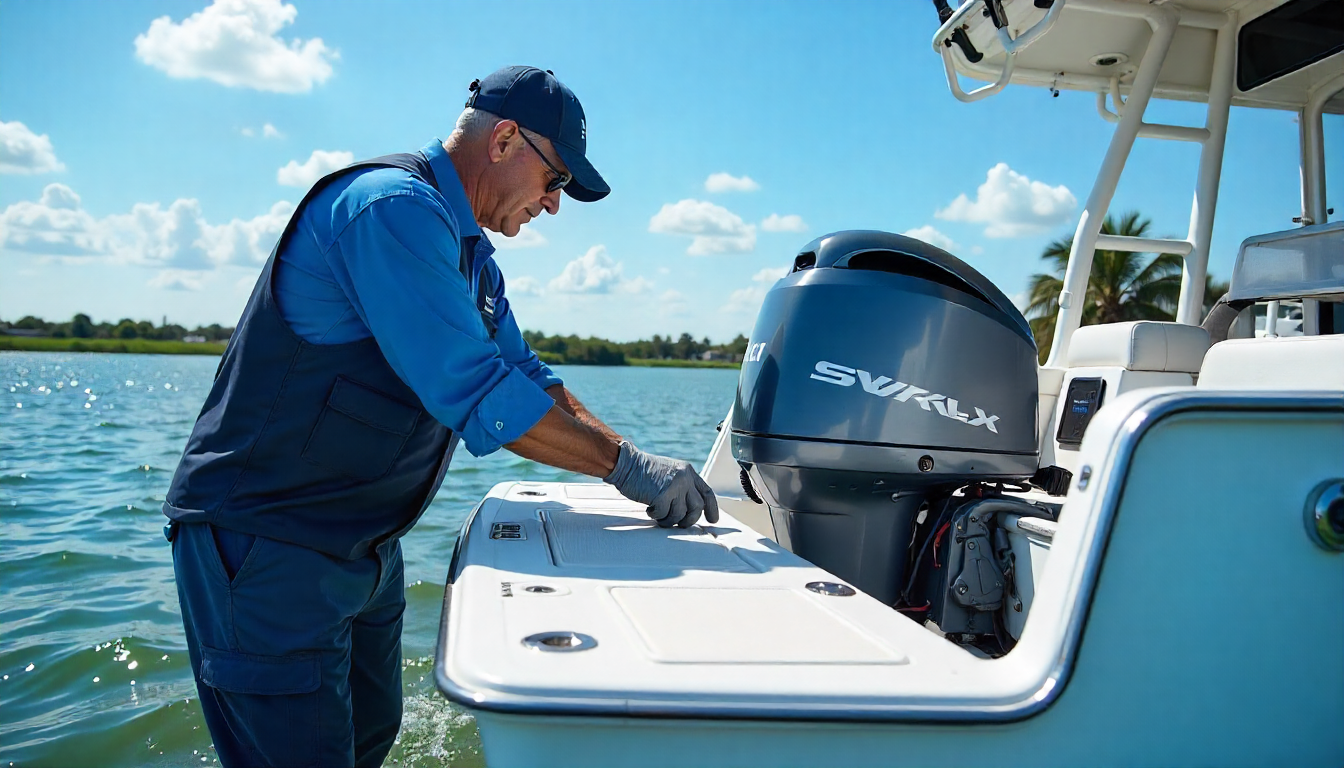Giriş
The right outboard jack plate can dramatically change how your boat performs, from speed and handling to shallow water access. Choosing a plate that matches your boat, engine, and typical water conditions ensures you get the most out of every trip. Whether you’re chasing better fuel economy, smoother handling, or improved overall efficiency, understanding the different types of jack plates and how they work is essential.
This guide covers everything you need to know, including the differences between manual jack plates and hydraulic systems, how setback affects performance, and the features that separate a good plate from a perfect one.
Why the Right Outboard Jack Plate Matters
A jack plate is far more than a mounting bracket. By letting you vertically adjust your outboard engine, the plate fine-tunes the propeller’s position in the water. When your engine sits at the right height, drag decreases, speed improves, and handling becomes more responsive.
The right outboard jack plate also makes shallow water navigation easier. By lifting the engine higher, you can move through areas without damaging your prop. For boats equipped with an outboard jet engine, this adjustability is even more valuable, as it lets you run at optimal intake height in varying depths.
Types of Jack Plates for Maximum Performance
Manual Jack Plates
Manual jack plates are a cost-effective choice for smaller boats or situations where frequent height adjustments aren’t necessary. They’re lighter, mechanically simple, and easy to maintain. Many anglers appreciate the reliability of manual jack plates, especially when fishing in freshwater lakes or rivers.
A manual jack plate requires physical adjustment—usually with a wrench. While less convenient than hydraulic systems, it’s a durable and long-lasting option, particularly when made from high-quality aluminum.
Hydraulic Jack Plates
Hydraulic jack plates offer on-the-fly adjustment, letting you fine-tune engine height with a push of a button. This is ideal for navigating changing water depths, making quick performance tweaks, or running in shallow water without stopping.
While they tend to cost more, hydraulic jack plates deliver unmatched flexibility. For competitive boaters or high-horsepower setups, this adjustability can mean faster acceleration, more top-end speed, and better handling.
How to Select the Right Outboard Jack Plate for Your Boat
Consider Setback Distance
Setback is the distance the plate holds your engine away from the transom. A longer setback can improve water flow to the prop and sometimes increase speed, but it also adds leverage and stress to the transom. Smaller boats may only need 4 inches of setback, while larger hulls with high-hp engines often benefit from more.
Evaluate Material Quality
Most jack plates are made from aluminum for its balance of strength and corrosion resistance. Top quality plates feature anodized finishes and stainless steel hardware for longevity. If you operate in saltwater, corrosion protection becomes even more critical.
Think About Adjustability
If you frequently run in shallow water or encounter varied depths, adjustability should be a top priority. A hydraulic jack plate gives instant control, while some advanced manual plates offer quick-change settings that can be adjusted at the dock.
Performance Benefits of Choosing the Right Outboard Jack Plate
Increased Fuel Economy
When the prop runs at the optimal depth, your engine works less to maintain speed. This reduction in drag can result in noticeable fuel savings over time.
Better Handling
Raising or lowering the engine changes how water flows under your hull, giving you more precise control. This can reduce porpoising, improve turns, and smooth out rides in choppy water.
Shallow Water Capability
Being able to lift your engine means you can explore areas that would be off-limits with a fixed mount. This is invaluable for anglers or boaters navigating narrow, shallow channels.
Matching Your Plate to Boat Size and Use
Smaller Boats
For boats under 150 hp, lighter manual jack plates are often a good fit. They’re easy to install, require less maintenance, and still deliver performance gains.
Larger or High-Performance Boats
Bigger hulls and powerful motors benefit from hydraulic jack plates with longer setback distances. These setups allow precise adjustments while underway for maximum speed and control.
Outboard Jet Setups
When running an outboard jet engine, proper plate adjustment ensures the intake operates efficiently without sucking in debris. This setup is popular for river running and shallow water fishing.
Installation Guidelines
- Check the Transom: Ensure it’s structurally sound and rated for your engine’s horsepower and weight.
- Use Quality Hardware: Stainless steel bolts prevent corrosion and keep the mount secure.
- Seal Every Hole: Marine-grade sealant protects against water intrusion into the transom.
- Follow Manufacturer Limits: Respect the recommended engine weight and setback range.
Care and Maintenance
A jack plate will last longer with regular care. Rinse after every saltwater use, inspect bolts, and lubricate moving parts. Hydraulic plates should have their fluid checked periodically, while manual jack plates need occasional adjustments to prevent corrosion lockup.
Keep an eye on the plate’s alignment and any signs of galvanic corrosion, especially with aluminum builds in saltwater. Proper upkeep ensures reliable performance season after season.
Common Mistakes to Avoid
- Choosing the Wrong Setback: Too much can stress the transom, too little can restrict performance gains.
- Ignoring Material Quality: Cheaper metals corrode quickly, especially in saltwater.
- Not Adjusting for Load: Boat weight changes with passengers and gear—adjust engine height accordingly.
Sonuç
The right outboard jack plate isn’t just an accessory—it’s a performance upgrade. By selecting a plate with the correct setback, material strength, and adjustability for your specific boat and engine, you can enjoy better speed, handling, fuel economy, and shallow water access.
Whether you choose manual jack plates for simplicity or a hydraulic model for convenience, making an informed decision ensures your setup delivers both efficiency and reliability. With proper installation and care, your jack plate will be a valuable part of your boating experience for years to come.

 How to Choose the Right Outboard Jack Plate for Maximum Performance">
How to Choose the Right Outboard Jack Plate for Maximum Performance">
